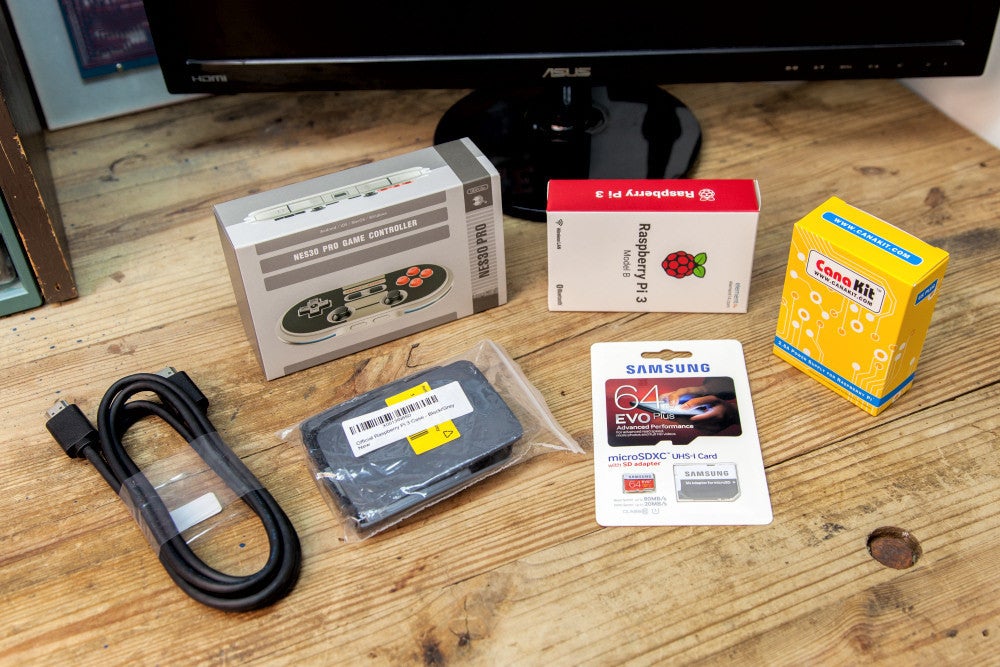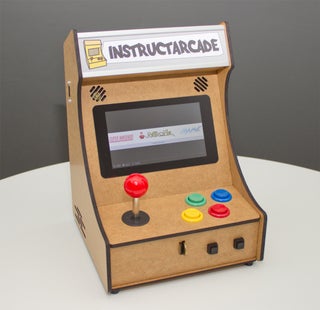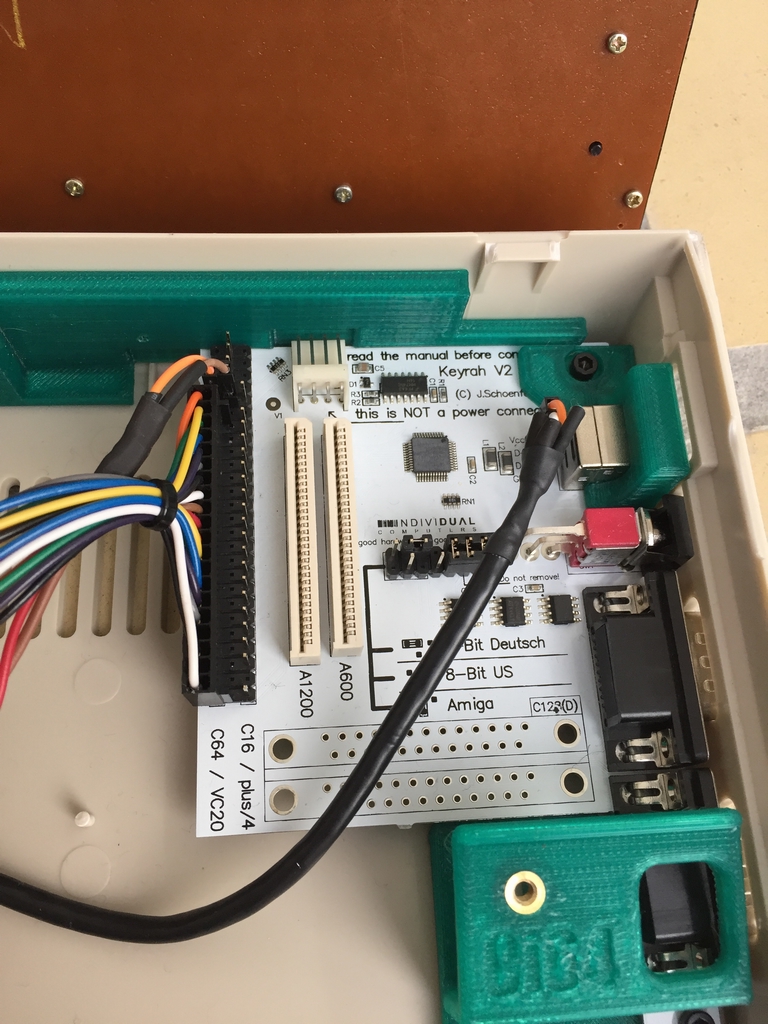Slot Machine Emulator Raspberry Pi
- Raspberry Pi Emulator
- Best Emulators For Raspberry Pi
- Raspberry Pi Slot Machine Software
- Slot Machine Emulator Raspberry Pi Pc
- Slot Machine Emulator Raspberry Pi
Raspberry Pi Slot Machine Emulator Download; Would you like to play Nintendo Entertainment System, Super Nintendo, SEGA and Gameboy games on your TV? Turning a Raspberry Pi into a retro game console emulator will allow you to do just that. Using the RetroPie project we will make your Raspberry Pi play Nintendo, Super Nintendo, SEGA Genesis. The Pi 3 has a friction-fit SD card slot (previous models had a click-in-place slot), so push it in slowly. The SD card label should be facing outward, away from Raspberry Pi board. Plug everything in. Raspberry Pi Stack Exchange is a question and answer site for users and developers of hardware and software for Raspberry Pi. I could then connect the SD slot of my device with the Pi and change the files / file contents on the fly without the device recognizing an SD card change (and, hopefully, without the device re-validating the. Check out my retro tech T-shirt store Previously on ‘ZX81: a Raspberry Pi retro restyle’: I used a headerless Arduino Leonardo to connect a ZX81 microcomputer keyboard to a Raspberry Pi via USB, using code to handle normal, shifted and function-shifted key presses.
Would you like to play Nintendo Entertainment System, Super Nintendo, SEGA and Gameboy games on your TV? Turning a Raspberry Pi into a retro game console emulator will allow you to do just that. Using the RetroPie project we will make your Raspberry Pi play Nintendo, Super Nintendo, SEGA Genesis, SEGA Master System and even arcade games such a PacMan or Donkey Kong.
Raspberry Pi Emulator
The TI99/4 with expansion modules. We decided to resurrect one of these bad boys and make a retro-inspired emulation machine — Raspberry Pi style. To run the system, we used the RetroPie Project. The emulation machine runs off of a Raspberry Pi running Retropie, this allows it to support various emulators such as NES, SNES, Gameboy, Gameboy Color, Gameboy Advance, Sega Genesis, Neo Geo, MAME, PlayStation One and can even emulate an Apple II. Like our own all-in-one retro game console, Zaqq's project uses RetroPie to get all the emulators set up and working on the Raspberry Pi.From there, the machine gets stuffed into a briefcase with. This Slot Machine is created with Java. The program run on Raspberry Pi overclocked at 1GHz with 512MB RAM. The cabinet is made in plywood. All buttons, rela. Turning a Raspberry Pi into a retro game console emulator will allow you to do just that. Using the RetroPie project we will make your Raspberry Pi play Nintendo, Super Nintendo, SEGA Genesis, SEGA Master System and even arcade games such a PacMan or Donkey Kong.
Prerequisites
To get started you’ll need a Raspberry Pi, a screen connected to it, a keyboard, and most importantly some controllers – remember to buy two so you can play with your friends.
Best Emulators For Raspberry Pi
The full list of things we’ll need is:
- Raspberry Pi 2/3 – for the best performance use the Raspberry Pi 3 Model B
- Monitor (or you can just use your TV with HDMI input)
- Gamepads / Controllers – I suggest you get a couple of game pads that emulate the look and feel of your favorite system that you want to emulate here are some pointers:
- If you’re not sure which one to get I can recommend the USB Xbox controller as a good all round controller
Initial Installation
Instead of starting from scratch with an empty Raspbian image and installing emulators one by one we are going to use a fantastic project called RetroPie. The RetroPie project lets you download a Raspberry Pi image that comes with the pre-loaded emulators cores and a slick interface. It will come with emulators for: NES, SNES, Genesis, Amiga, MAME (for arcade games) and many others. Those that are not pre-loaded you can find and install through the easy to use menu system.
Now to get started head over to the RetroPie download page and click the button download the version for Raspberry 2/3.
Once downloaded, extract the image and load it on to a SD card using win32diskimager:
Now connect your Raspberry Pi to the your TV, keyboard, favorite controller and WiFi dongle (if Raspberry 2) and power it up.
First Boot
On your first boot you will see the regular Raspberry boot sequence and the RetroPie logo. RetroPie will initialize and expand the file system as well as initialize it self, this will take a little while (5+ minutes) so have patience.
Once its done you’ll see the welcome screen below:
If you don’t see the welcome screen and instead see “Illegal Instruction” and it boots into the terminal its likely because you picked the wrong image during the download step. Go back and download the correct image for your Raspberry Pi 1 or 2/3.
Now go through the setup steps for your controller as instructed on the welcome screen.
Use the following diagram as a button reference if needed:
Controller Reference RetroPie (source: https://github.com/retropie/retropie-setup/wiki/First-Installation)
Once you’re done setting up your controller you’ll see the emulation station setup screen. You can exit this screen by pressing B on your controller at anytime and get back to setup screen by pressing start.
Raspberry Pi Slot Machine Emulator Online
If you exit the screen you’ll get to the main RetroPie interface you navigate between emulator by using left and right on your d-pad. You’ll notice there are no emulators available right now.
To get emulators to show up we need to load some games (ROMs) on to your RetroPie. To do that we need to setup a WiFi or wired network connection.
WiFi Setup
To setup WiFi go the RetroPie configuration screen and press A. You’ll now be taken to the configuration interface below:
Select the WiFi option and use your keyword to navigate through the configuration screens to select your network and setup your network key.
Once connected you can go back to the RetroPie interface by selecting exit (use tab to navigate the options). To verify you’re connected you can select the “Show IP” option, it should show you the local IP address of your RetroPie on your network.
The RetroPie configuration screen can also be used to change themes, setup connections to BlueTooth devices etc.
Additional Controller Setup
If you ever want to reconfigure your controller or configure a new controller to enable two player play you can press the start button of the currently connected controller and select the Configure Input option. This will take you through the controller configuration guide again allowing you to setup the controller / gamepad.


Transferring ROMs
Now that we have the Raspberry Pi installed, our controllers setup and WiFi configured its time to add games so we can start playing.
Due to varying copyright restrictions and IP laws RetroPie cannot be distributed with pre-loaded ROMs, instead you’ll have to go out and find your own ROMs. You can do this by ripping your old cartridges – or if you do some googling you may also just stumble upon your favorite game.
Once you have the ROMs downloaded to your laptop you’ll need to transfer them to your RetroPie.

Raspberry Pi Slot Machine Software
From Windows this can easily be done using the built-in Samba share on the RetroPie Raspberry Pi.
Open a file explorer in Windows and go to:
If Windows asks for a username and password use:
- Username: pi
- Password: raspberry
On the file share open the roms folder find the emulator you want to use and load games (ROMs) into the directory.
On MAC you can open finder and select “Connect to Server” from the “Go” menu – type in smb://retropie and click the connect button.
Slot Machine Emulator Raspberry Pi
Once you have loaded the games into the roms folder – reboot the system by pressing start selecting quit and select the restart system option.
The very last step
Now wait for your RetroPie to boot up again, press the d-pad left and right to check the emulators are now loaded into the interface, let nostalgia take over and play your favorite games.
Raspberry Pi Slot Machine Emulator Free
Go save that princess…
Raspberry Pi Slot Machine Emulator Windows 10
How to exit out of a game?
Raspberry Pi Slot Machine Emulator Download
Now you’ve booted up your favorite game, played for a few hours and want to play something else… how do you exit out of a game? simply press select and start at the same time this will take you back to the RetroPie setup screen.
Check out my retro tech T-shirt store
Previously on ‘ZX81: a Raspberry Pi retro restyle’: I used a headerless Arduino Leonardo to connect a ZX81 microcomputer keyboard to a Raspberry Pi via USB, using code to handle normal, shifted and function-shifted key presses.
After some searching on eBay, I found an old ZX81 going cheap because it lacked cables, though when it arrived, I found the computer itself to be in excellent condition. Possibly it has never been used, though how if that were the case the cables were lost and the box got so tatty is a mystery I will probably never solve.

A new ZX keyboard connected to the USB controller – an Arduino Leonardo
Opening up the Sinclair machine was the work of a moment. Some screws are located under the computer’s rubber feet, so remove the latter carefully so you can put them back afterward – as was unlatching the keyboard connector ribbon and removing the motherboard.
One particular sign of age was the keyboard ribbon, which seemed in good condition at first. Unfortunately, 30-odd years is beyond the life expectancy of the plastic from which it was formed, and it soon began to perish and crack open. Eventually it provided so little protection for the delicate wiring, one line broke. Fortunately, I had a modern replacement. With a little gentle prying, I was able to lift the original membrane keyboard off the casing – it was originally attached with a self-adhesive pad – and replace it with the new one, ready to be stuck down in its place.
That was a relatively easy process; rather more tricky was getting the Pi and its cabling to fit inside the ZX81 casing. Fit it does, but only just, and I have had to make a couple of compromises.
My goal was to expose as many of the Pi’s ports as possible, at least among those I use. The analogue audio and composite-video jacks, for instance, have never been used, so I was happy for these to be hidden. But the HDMI, Ethernet, USB, GPIO and – obviously – power jack needed to be accessible.
The ZX-Pi’s video out port: the on-board HDMI connector
If you plan to try this yourself, the best advice I can give is to spend plenty of time trying out possible internal configurations of Pi and cables. The location of the Leonardo board is fixed to a degree by the size of the ribbon cable coming off the keyboard. Eventually, I settled on placing the Pi upside down with the USB and Ethernet facing the back of the casing, and the HDMI port adjacent to the ZX81’s original video out, cassette and power ports.
This location required me to remove only three of the case’s internal supports – they yield easily to a pair of wire cutters, and you can rub the nub down with glass-paper.
I had a short Ethernet cable already, so I ordered a cable joiner to clip on the end as my new Ethernet port. This would be accessed through what was once the ZX81’s Ram Pack connector bay. Likewise the single female USB port I planned to fit, a second USB input for the power feed, and GPIO pins on a ribbon extension cable.
eBay provided me with the Ethernet cable joiner – a small plastic unit that could be glued to the base of the case – and a couple of short USB adaptor cables with right-angled male Type A connectors. My Ethernet cable had a standard connector, but with some careful whittling away of excess plastic, I was able to slot it into the Pi and bend the cable sufficiently for it to fit.
Fitting it all together is a fiddly business, and I found the only way to do it was to glue down some cables to hold them steady – partly to keep them where I wanted them but also to stop rigidity in the cable moving the Pi away from its desired location. Only use tiny amounts of glue so you can easily remove the cables if you ever need to; the glue is really just an extra hand to hold the cable down for you.
Unfortunately, the GPIO extension cable connector added too much to the Pi’s depth and so prevented the ZX81 case from closing with it in place. So I had to reject that plan. I also had to remove a very small part of the lower half of the case at the back to fully expose the Ethernet port. Aside from opening the case’s separate cassette and power ports into a single port to fully expose the Pi’s HDMI connector, I had to make no other changes to the ZX81’s external appearance.
Inside the ZX-Pi: take care placing your cables
Having had to drop GPIO pass through, my second compromise was the power cable. I found a male to female micro USB cable, but the male end was too large to fit in the case, even when whittled down, so for version 1.0, I elected to fit a standard cable and route it out through the back of the case. This is not ideal, and I will address this.
My right-angled USB cable was just too short to allow the female jack to be fitted to the case, so I decided I needed either to cut away more of the case itself – something I have been trying to avoid – or fit a short USB extension cable that can be correctly routed inside the case so that the port is facing outward rather than dangling outside. There wasn’t really room for the latter, so I tried a third option: cut away the right-angle cable’s connector sheathing to see if it would then bend enough for my to place it where I wanted it. Fortunately, it did. Super glue fixed the female USB port in place.
For now, though, even with these compromises, I was was able to fit the two halves of the ZX81 case together and screw them into place. I now have a Raspberry Pi inside a ZX81, complete with working membrane keyboard.
The finished ZX-Pi: the only compromise is the hardwired power cable
There’s room for improvement. I’d like not to have a power cable dangling out of the back – the orange USB cable in the pictures – and I really would like to expose the Raspberry Pi’s GPIO pins somehow.
Slot Machine Emulator Raspberry Pi Pc
Then there’s the fundamental drawback with this set-up. Gorgeous though the ZX81 is, its real weakness is the membrane keyboard. Sure it works, but it’s a chore to use. I can imagine newcomers to computing coping with it in the 1980s – they didn’t know better; they had nothing to compare it to – but it’s hard going when you’re accustomed to a good Qwerty deck. But, as I say, it works. I certainly going to work on the Arduino code to get more functionality out if it.
Slot Machine Emulator Raspberry Pi
Hardware hackers with more experience and confidence than me could do a lot better by stripping the Pi of some of its ports – USB, Ethernet and the GPIO header in particular – to run wires from the board to the case’s ports rather than regular cables. This should make everything fit a lot more smoothly.